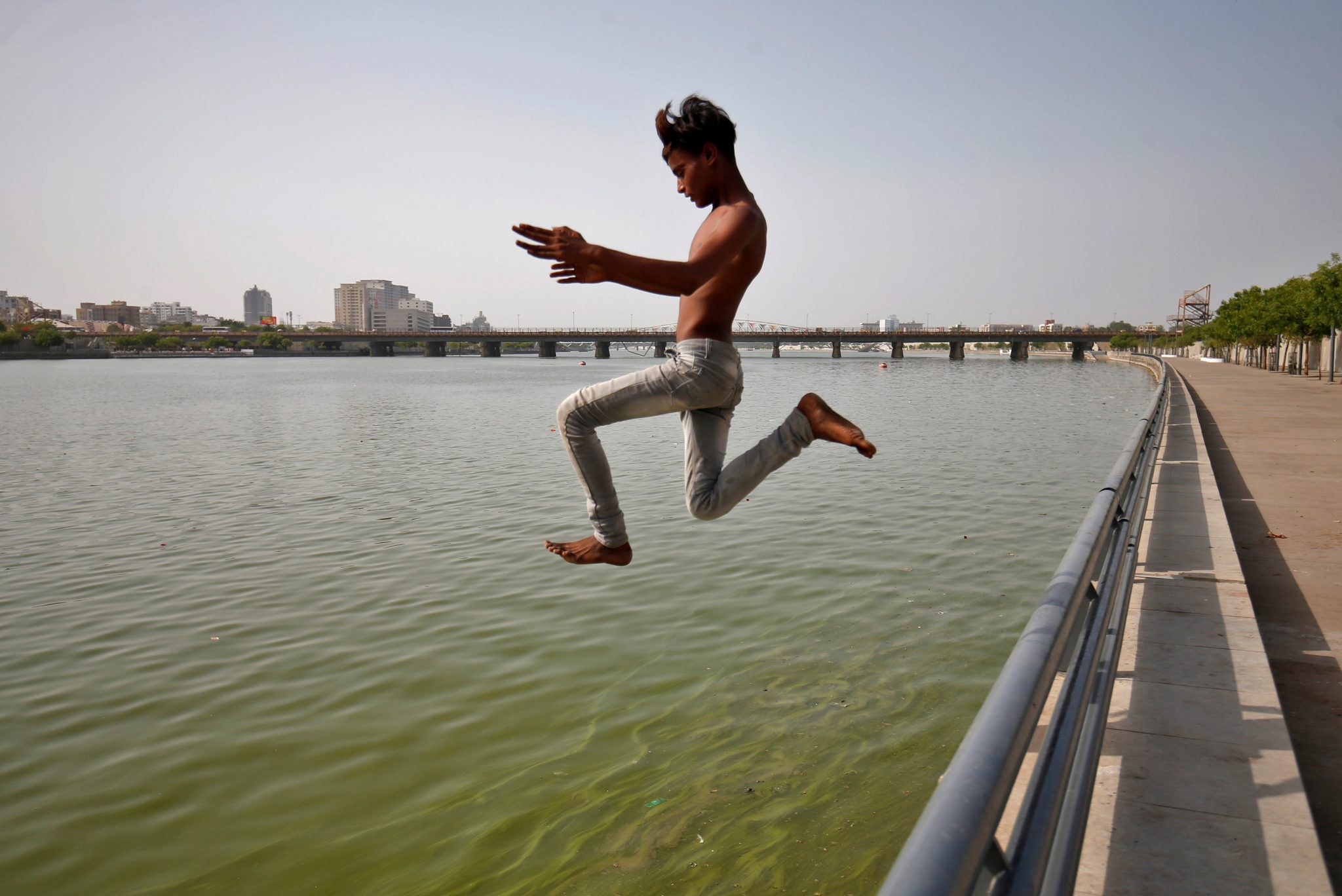Building a heat-resistant India | East Asia Forum

Authors: Simrit Kaur and Harpreet Kaur, University of Delhi
Heat waves in India have become more frequent, prolonged, intense and geographically widespread. Twelve of the country’s 15 hottest years have occurred since 2006, with the death toll tripling since the 1950s to more than 3,000 people. Addressing these natural disasters, including heat waves, requires a cohesive and collaborative policy response from the Indian government.
Heat waves occur when the Indian plains experience maximum temperatures above 40 degrees Celsius and the Indian hills exceed 30 degrees Celsius. Such events usually occur in May and June, but are now seen in March – the March 2022 heatwave (knowing over 50% of Indian states) breaking 100-year-old records.
Heat waves impact human productivity through dehydration, exhaustion and heat stroke. Urban residents are susceptible to these risks due to high-density cities with multi-story buildings and roads that increase heat from the sun. This creates an urban heat island effect due to diminishing green cover and water bodies, leading to increased energy costs.
Increased energy use increases the demand for coal-based energy, creating a vicious cycle of emissions and environmental damage. The World Weather Attribution report indicates that climate change has increased the likelihood of heat waves 30 times.
Heat waves are one of the concomitant impacts of climate change with severe water scarcity, droughts and loss of agricultural land and marine ecosystems. In 2019, extreme weather events produced up to four million internally displaced people (IDPs) and spurred internal migration as an adaptation mechanism to climate change. These events have disproportionately affected marginalized and disadvantaged people, including women and children who largely depend on nature for their livelihoods. UNICEF ranks India 26th on the Global Children’s Climate Risk Index.
Climate change is reducing agricultural yields, with the 2022 wheat production season in India dropping by 10-50%. The Indian government’s restrictive trade policies banning wheat exports have since impacted global wheat prices. Yield reductions imply lower farm incomes and higher food prices, potentially increasing the number of farmer suicides and negatively affecting disposable income at the expense of education and health.
Heatwaves have caused infrastructure losses and service and supply disruptions worth around US$87 billion in 2020. India will need to spend US$140-300 billion in 2030 and US$280-500 billion in 2050 to protect against climate change by investing in computing capabilities and weather forecasting — investments that come at the expense of high-income, job-creating activities. Weather risks have also worsened India’s credit rating due to greater economic volatility due to the greater incidence and extreme magnitude of weather-related shocks.
India adopted policies in the form of the National Climate Change Action Plan in 2008 to address its vulnerability to climate change, establishing eight national missions – including building solar power capacity, the promotion of energy savings and the promotion of sustainable agricultural practices. To address the impact of climate change on agriculture, programs such as Per Drop More Crop are promoted to conserve water resources. Farmers and employment centers also receive subsidies to adopt agricultural mechanization for in situ management of crop residues to avoid stubble burning.
The Intergovernmental Panel on Climate Change recently advised aligning social protection with state responses to climate change. India’s Mahatma Gandhi Rural Employment Guarantee Act 2005 emphasizes building community resilience to climate change by developing community assets such as dams, watersheds, all-weather roads, etc., based on climate risk planning.
The Solar Energy as a Cash Crop (SPaRC) project set up by the International Water Management Institute (IWMI) should be promoted to conserve groundwater alongside effective pricing mechanisms to discourage over-pumping .
A cohesive, regional approach to improving river management, fostering hydroelectric and solar power, and developing less water-intensive hybrid power-producing varieties – alongside regional food seed banks – is essential to building climate-resilient economies. climate change. Collaboration between different levels of government is essential to adopt “best practices”, share experiences or learn from local Indian communities resilient to natural disasters.
Climate finance is the final key to climate action. The Paris Agreement recognized that financial support from developed countries is crucial to help India meet its Nationally Determined Contributions of around $170 billion a year. But despite India’s call on developed countries to fulfill their historic responsibility to provide climate finance assistance with a focus on mitigation as well and adaptation, green finance flows averaged only US$19 billion in 2016-2018.
Heat waves may have warmed the environment, but India’s response to them remains lukewarm, if not cold. A more sustained and aggressive policy approach would be more desirable than New Delhi’s current hot-cold policy stance.
Simrit Kaur is Principal of the Shri Ram College of Commerce and Professor of Economics and Public Policy at the University of Delhi, India.
Harpreet Kaur is Associate Professor at Sri Guru Gobind Singh College of Commerce, University of Delhi, India.






